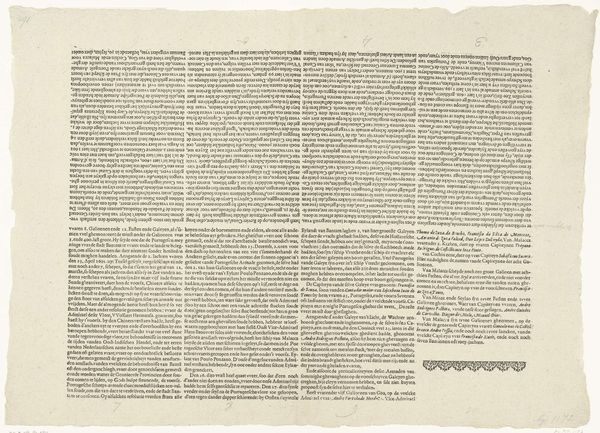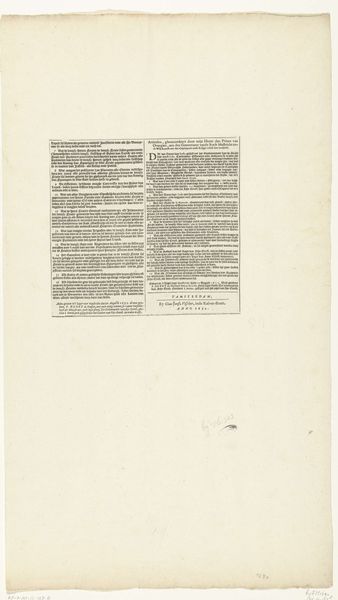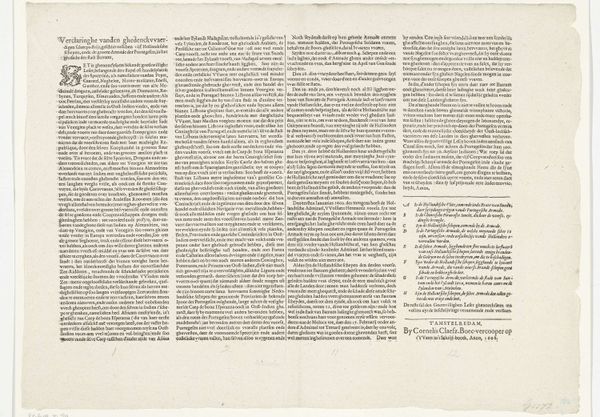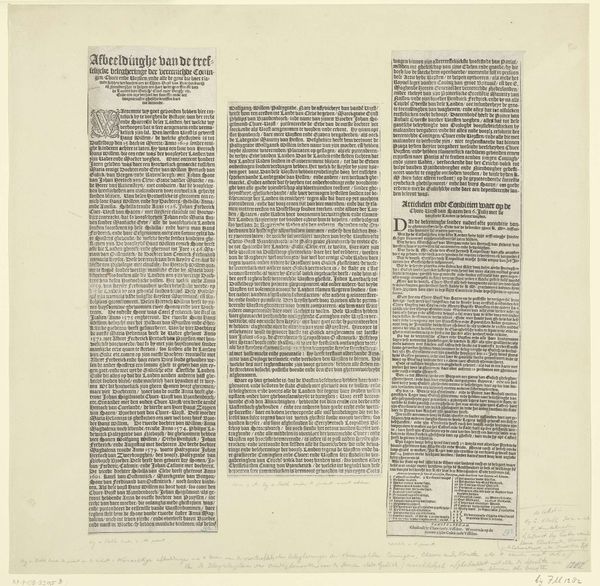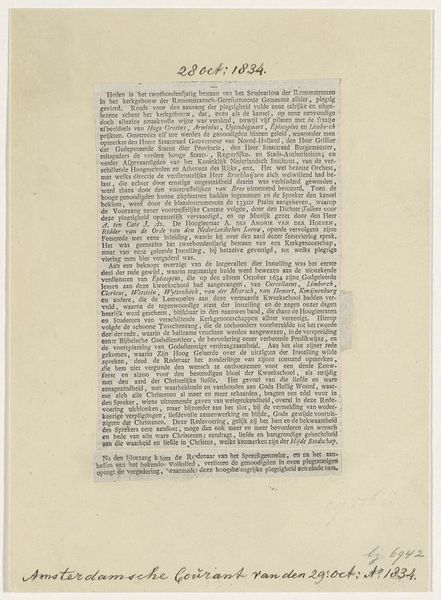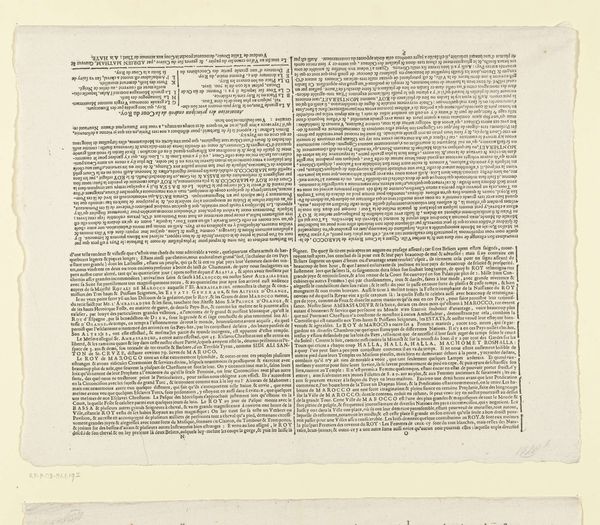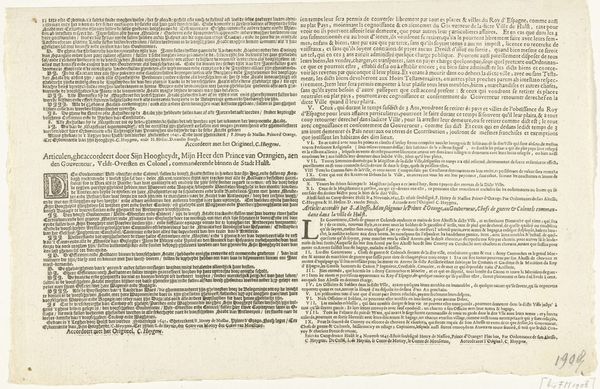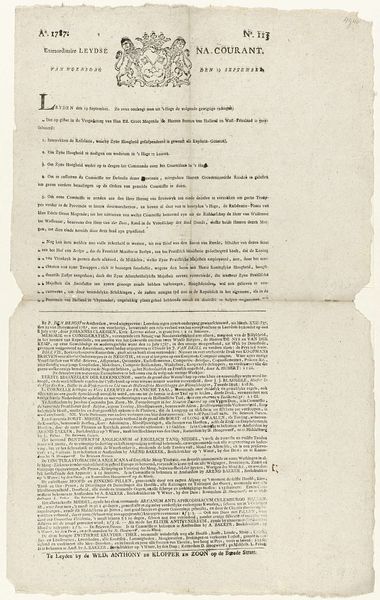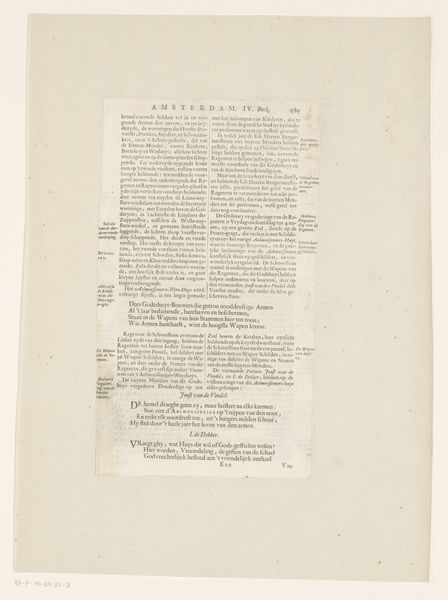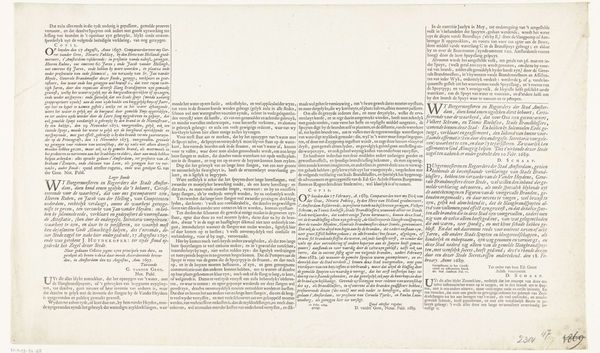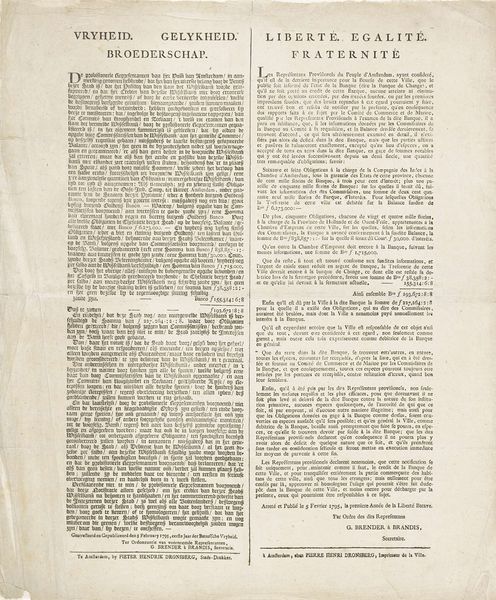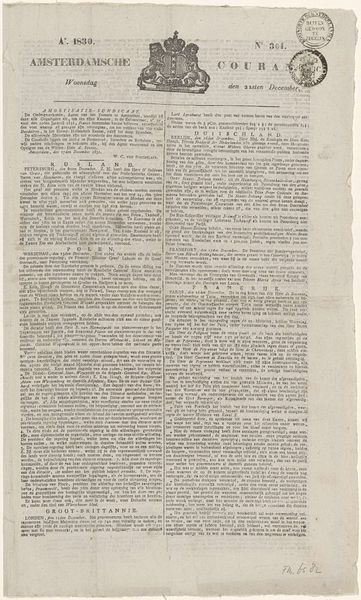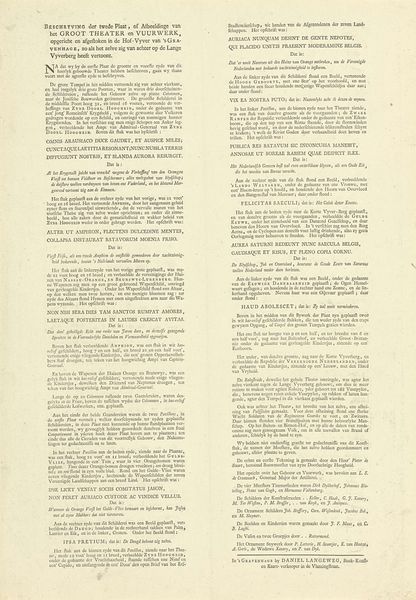
graphic-art, print, typography, engraving
#
graphic-art
#
baroque
# print
#
landscape
#
typography
#
cityscape
#
engraving
Dimensions: height 378 mm, width 166 mm, height 366 mm, width 124 mm
Copyright: Rijks Museum: Open Domain
Editor: This is "Tekstblad bij de prent met het profiel van Bergen op Zoom, 1645" from Anthony de Later. It’s a 17th-century engraving, mainly text. It almost looks like two columns of dense writing on aged paper. What can we learn from it? Curator: Let’s consider the labor involved in producing this print. The engraver meticulously cut into a metal plate to create these incredibly detailed letterforms. Think about the physical act of production, the hours spent crafting this object. The typography is quite amazing here, too. Editor: So you're drawn to how it was physically made, the actual process? Curator: Exactly. And how that process connects to broader social contexts. Who was commissioning such works, and why? How did the availability of paper and printing technology shape the spread of information? Was the intent purely informational? Or was the quality of production intended to signify power or status, in ways we still see with "luxury goods"? Consider too that printmaking made the dissemination of such images, propaganda, so much easier than it had been only a century before. Editor: That’s interesting, how the materials and production speak to a bigger picture. I hadn’t thought about it in terms of labor before, or it being used for power. Curator: Think about the act of reading this text. It's about a city, so we can infer it being a city profile that could promote immigration, inform merchants and/or other political bodies of a specific places qualities. It required a certain level of literacy. Who was the intended audience, and how did access to this printed material define them socially? Editor: So, by looking at the material and process, we get insight into the social and economic factors surrounding its creation and use. Curator: Precisely. And by questioning the traditional boundaries between art, craft, and document, we uncover hidden stories about the past.
Comments
No comments
Be the first to comment and join the conversation on the ultimate creative platform.
